Netflix’s satirical science fiction film ‘The Platform 2,’ a follow-up to the 2019 thriller movie ‘The Platform,’ ends with ambiguous developments concerning the fate of Perempuán, the protagonist who tries to escape from the Pit or the tower-style “Vertical Self-Management Center.” Her efforts to save herself from the misery that haunts the establishment’s inhabitants lead her to the bottom of the structure, where a group of strange people welcomes her. As she adapts to her new “surroundings,” she encounters an unexpected person from her past, astounding the viewers. The Spanish film concludes by raising more questions than offering answers the ardent admirers of the franchise have been desperately seeking for years! SPOILERS AHEAD.
The Platform 2 Plot Synopsis
‘The Platform 2’ begins with a shot of a group of children playing in an unrevealed location wearing the same clothes the inhabitants of the Pit use. The film then introduces new residents arriving at the self-management center for various reasons. Zamiatin comes to the place after nearly killing his family by burning his parents’ house down. At his designated cell, he meets Perempuán, who does not reveal why she is in the Pit. Right after their arrival, they are asked only to consume their favorite dish to ensure that there will be enough food for every inhabitant.
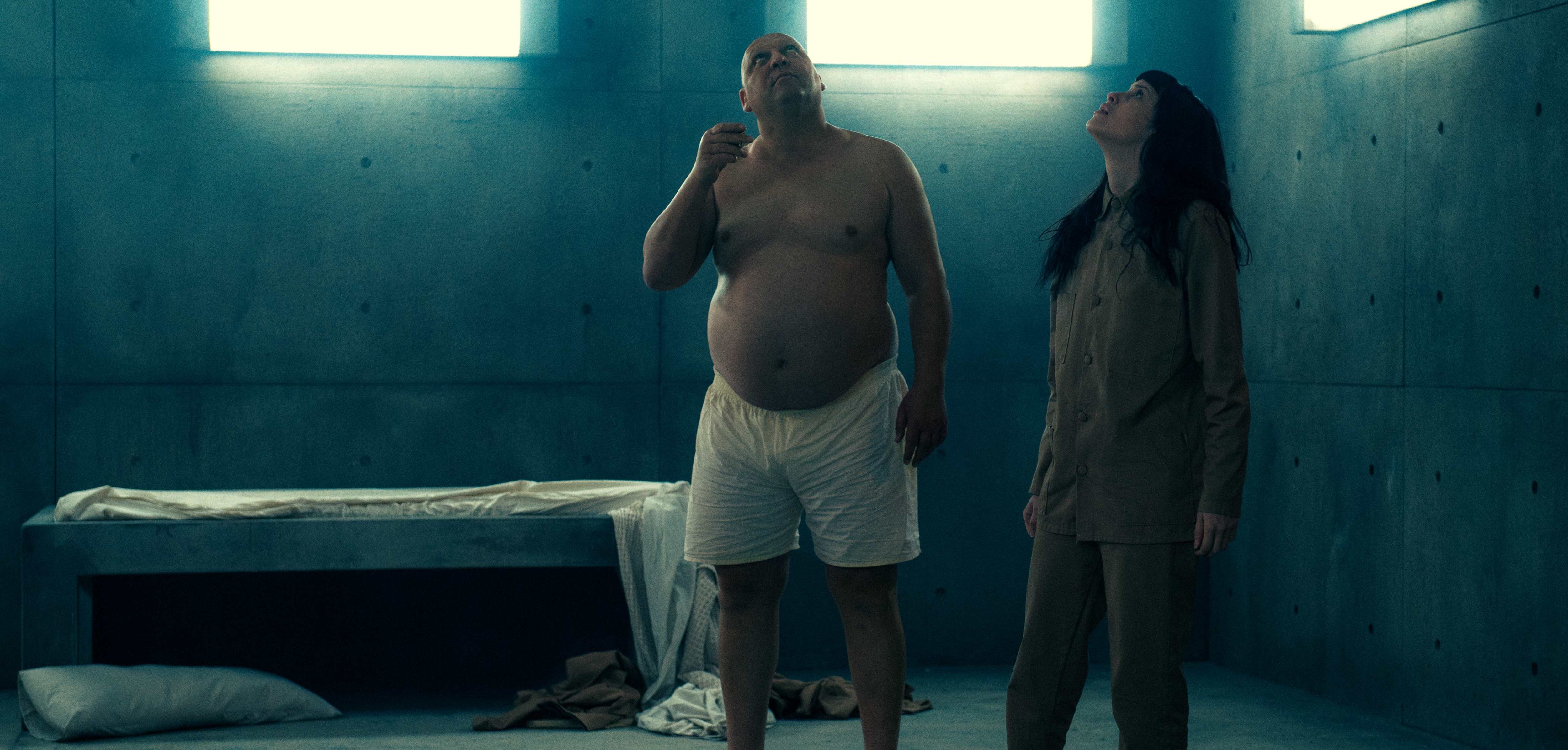
Life in the Pit is governed by rules created in homage to the “Master,” who fed the vulnerable and the unlucky on the lower levels using his flesh. His sacrifice inspired a group of witnesses, who call themselves the Anointed Ones, to create laws that maintain the rationing of the available food items to feed everyone in the tower. The people who disobey or stand against the rules are called the Barbarians, while those who follow the reformations are known as the Loyalists. Zamiatin and Perempuán are asked to eat the pizza and croquettes, respectively. When anybody eats others’ dishes before the platform reaches the latter’s levels, the Loyalists attack them to ensure the even distribution of the food.
This conflict between the Loyalists and the Barbarians unsettles life in the Pit. A French Loyalist explains that the inhabitants should throw away the food items that belong to the people who died in the battles between the two groups since it is not fair when the residents of the higher levels get to have more food than the individuals on the lower levels. Despite the rule, Zamiatin eats the dishes of the dead, making him a Barbarian. The large man gradually forms a friendship with Perempuán, which helps the former immensely when they are transferred to a lower level where the food items barely reach.
Reformation Without Compassion Caused Tyranny in the Pit
On the surface, the laws and regulations in place in the Pit may seem fair and necessary to feed the six hundred and sixty-six inhabitants living in the establishment. If they are not implemented, the people on the higher levels can easily help themselves with most of the dishes and leave the residents of the lower levels without any food necessary for survival. However, the blind reliance on these laws paves the way for inhumane consequences. The strictness associated with the same does not leave room for taking unexpected developments into account, such as the disruptions caused by the Barbarians. The rules state how to deal with the ones who disobey the same, but they do not explain how to manage the repercussions of the rulebreakers’ actions with compassion.

Let’s take the example of the unnamed Barbarian who stole the dishes that belonged to the dead or other residents. He states that he consumed the food that was essential for his survival. The man must have resorted to the measure because of his desperation caused by the disruption in the rationing. While his predicament is understandable, the law does not tolerate his actions. The rules would rather have the residents die of starvation than save their lives with the dishes that belong to the dead. The need to waste life-saving food to implement the laws shows how inhumane the reformation implemented by the Anointed Ones is.
In a just society, laws are solutions only when interpreted within a context. That’s why judicial systems exist worldwide. The execution of rules in isolation is tyranny rather than the implementation of any sort of order, making Dagin Babi, the leader of the Anointed Ones, a tyrant. Babi does not care about the circumstances that disrupt the execution of his laws. When Perempuán and her cellmate fight for his people and rules, he punishes them for deviating from what he asks them to do. If Babi’s main concern is the survival of the Pit’s residents, he should appreciate the protagonist’s efforts. Instead, he amputates her hand to teach her that she is expected only to follow him blindly.
One of the foundational features of tyranny is that it can present inhumane laws as the new normal with justifications. To simplify, in any dictatorship, the tyrant is considered a supreme individual rather than an equal to his subjects, even though it doesn’t rationally make sense. That’s exactly what happens in the Pit. Babi justifies his actions without realizing that he is as heartless as the “Administration” that sent the platform without any food to the lower levels. Zamiatin becomes a victim of this tyranny when he kills himself because of paranoia. He wouldn’t have needed to fear the Anointed Ones and resort to death if Babi’s soldiers had realized that the man ate the dead people’s dishes because someone else ate his pizza.
The Platform 2 Ending: Is Perempuán Dead or Alive? Who Are at the Bottom of the Pit?
After becoming a victim of Dagin Babi’s tyranny, Perempuán sets out to escape from the Pit. She relies on a plan she created with her unnamed cellmate, who gets killed by the “blind tyrant.” As ‘The Platform’ explains, at the end of every month, the residents are transferred to a different level after making them unconscious using an anesthetic gas called sevoflurane. During one of these procedures, Perempuán swallows a painting of a drowning dog that seemingly contains toxic materials. The act makes her vomit severely and leaves her unconscious, mimicking the symptoms of death. She expects the Administration to remove the corpses through the top of the Pit, giving her an opening to escape from the tower.
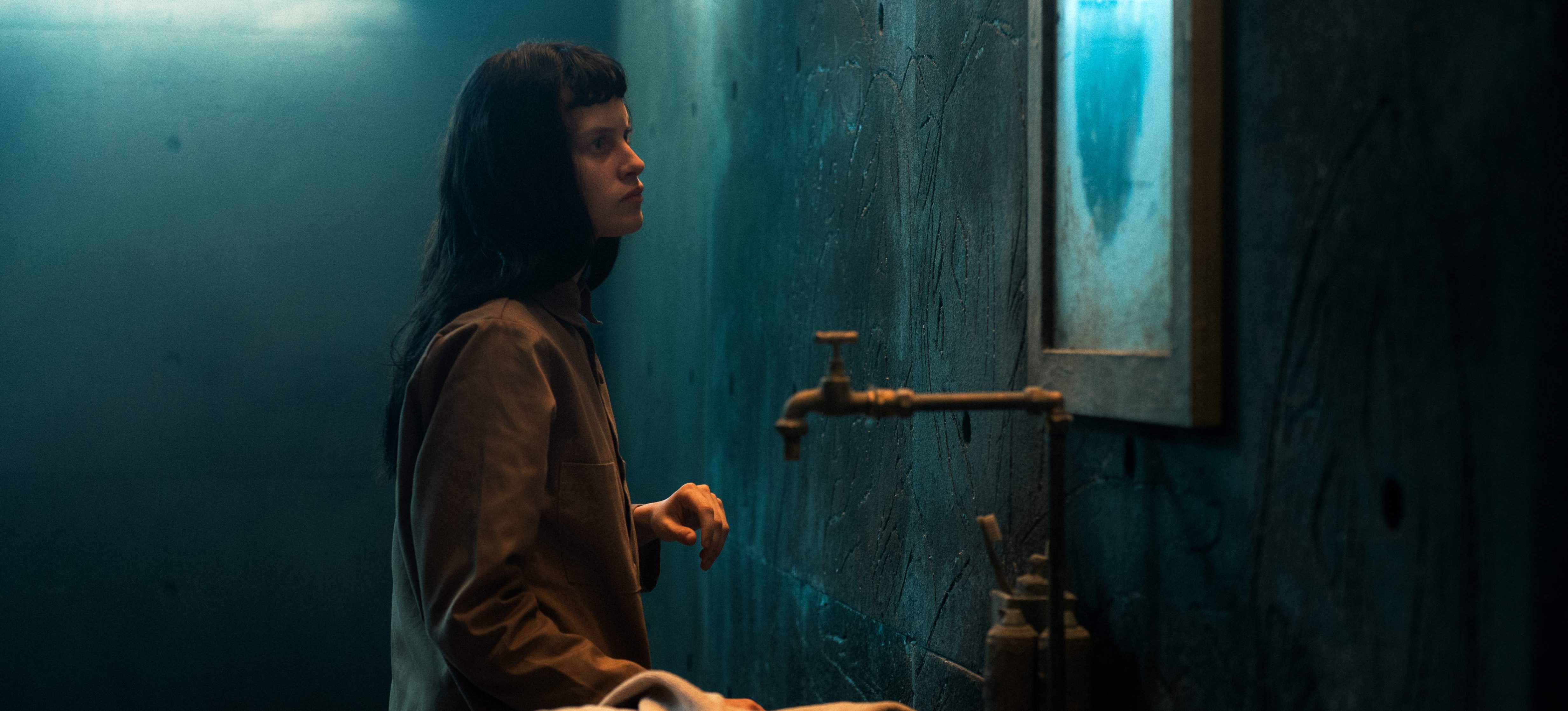
However, the corpses are sent to the bottom of the Pit. She reaches there after hitting her head several times in the walls of the establishment, causing life-threatening injuries. At the bottom, she is welcomed by a group of people, including a bald, large man who resembles the late Zamiatin. From what we understand, the bottom of the Pit belongs to the Dead, the fourth group of inhabitants in the structure. After reaching the bottom with life-threatening injuries, the individuals who surround Perempuán do not let her return to the levels, indicating that she has died too. The presence of not only Zamiatin but also Trimagasi supports this inference.
‘The Platform 2’ ends with Trimagasi at the bottom of the Pit. From ‘The Platform,’ we know that Miharu kills him while he eats Goreng’s flesh. Therefore, his presence makes it clear that the Bottom belongs to the dead people, unfortunately including Perempuán. The Pit consists of 333 levels to accommodate 666 residents. The particular number is usually associated with Satan or Antichrist. According to the ‘Bible,’ Satan is banished to the Abyss, which also represents Hell. In the Hebrew ‘Bible,’ the place is also described as the “abode of the dead.” The bottom of the Pit is eerily similar to descriptions of the Abyss, which makes it the home of the lifeless.
It is significant to note that the people who end up at the bottom are often the rebellious ones or rulebreakers. Perempuán reaches the place after rebelling against the Anointed Ones and killing their leader, Dagin Babi. In Zamiatin’s case, he appears in the region after becoming a Barbarian. In the first film, Goreng is led to the bottom after he stands against the Administration. These factors make them appear as the fallen angels who are banished to the abode of the dead in Abrahamic religions. Therefore, it is safe to conclude that Perempuán is dead and now is with people who died before her, as further made evident by the dispatch of the corpses to the bottom of the Pit.
Are Perempuán and Goreng Related? How?
After Perempuán reaches the bottom, she is followed by Goreng after an unspecified period of time. When they meet in the “abyss,” they instantly recognize each other and become emotional. With tears in their eyes, they hug, indicating that they know one another. Goreng can be the ex-boyfriend of Perempuán. The sculptor arrives in the Pit to escape from her partner after indirectly causing the death of the latter’s son. Before she ended up in the tower, she was an artist who cherished a relationship with a man with a child. Her career took a turn for the better when she joined a group of artists to set up an exhibition that explores animal cruelty.
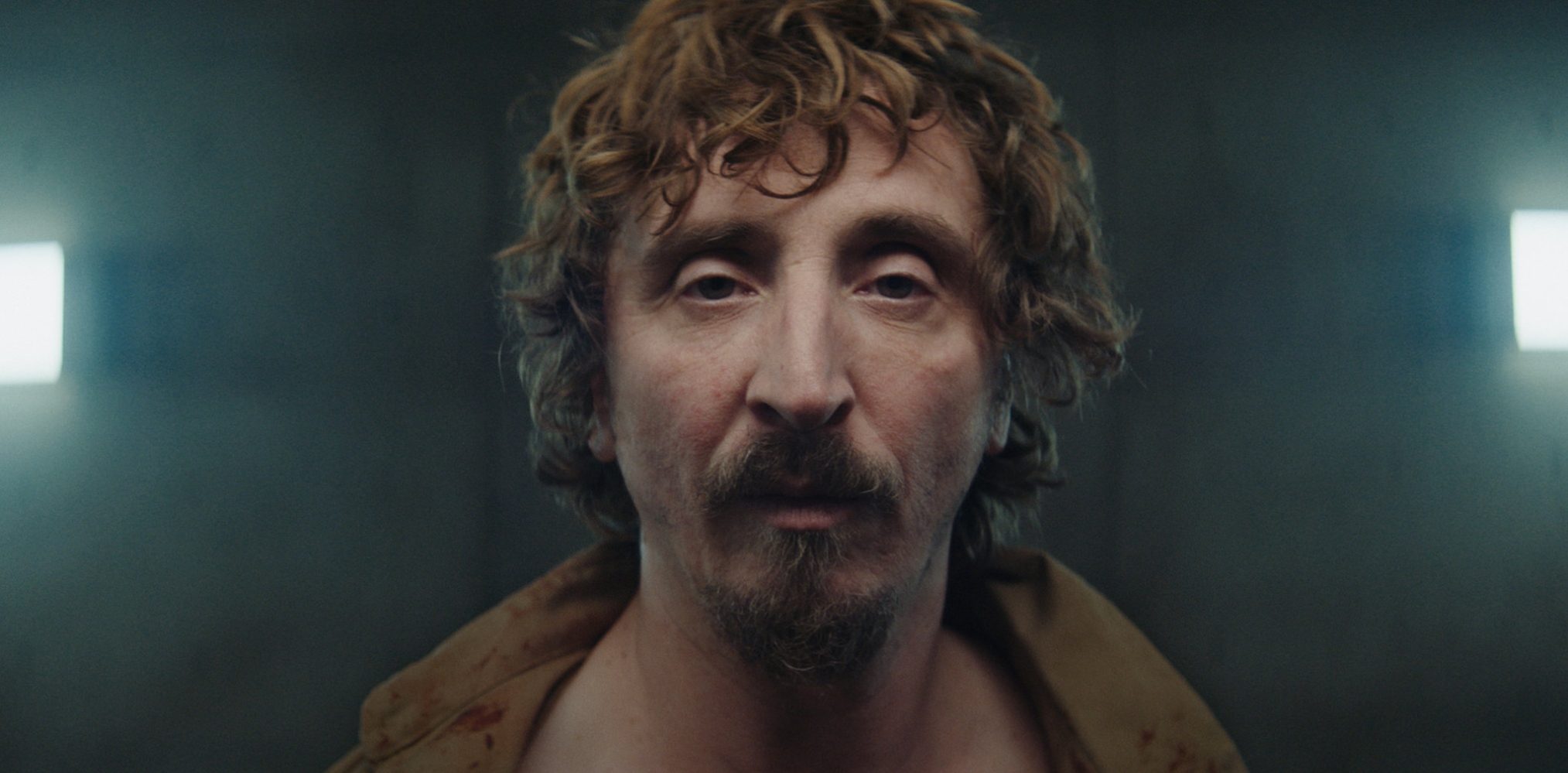
Perempuán’s sculpture was a dog with blades as its claws. To celebrate the exhibition, her partner showed up at the venue with his son, marking the strengthening of their relationship. However, she got immersed in guilt when the child died after accidentally falling onto the blades. She then arrived in the Pit to process her grief and escape from the success she garnered through the exhibition that was stained by the blood of her partner’s child. If Goreng is really her ex-boyfriend, he may have applied to be a resident of the Pit to find her.
The inhabitants of the Pit usually end up in the tower after committing a crime or causing a tragic occurrence. Trimagasi nearly killed someone using his knife, and Zamiatin almost burned his parents down before they arrived at the tower. Perempuán had caused a death before she became the structure’s inhabitant. However, Goreng does not have a similar history. In ‘The Platform,’ when Trimagasi asks him why he is in the Pit, the young man answers that he applied to be a resident to read ‘Don Quixote’ and gain an accredited degree, which are outrageous reasons to enter Hell willingly. Since Trimagasi says nobody promised him a degree, we can infer that Goreng relies on these reasons to hide his real intention.
In the 2019 original film, after entering the Pit, Goreng decides to go through different levels of the structure with Baharat. He may have done this to look for Perempuán. After a while, he must have abandoned his hope of finding her, especially after learning how easily people die within the establishment.
Who Are the Children? Why Does Miharu Select a Boy?
In ‘The Platform,’ the residents closely associated with the Pit state that the establishment does not allow children to inhabit the establishment. The rule turns out to be non-existent when Goreng finds a little girl who is seen as the “message.” However, the girl is presented as an exception in the entire structure. In ‘The Platform 2,’ that’s not really the case. There are several children seemingly within the establishment. At the end of the film, Miharu chooses a boy who is transported to one of the lower levels. The abundance of children in the place is unsurprising since the residents can reproduce within the Pit.
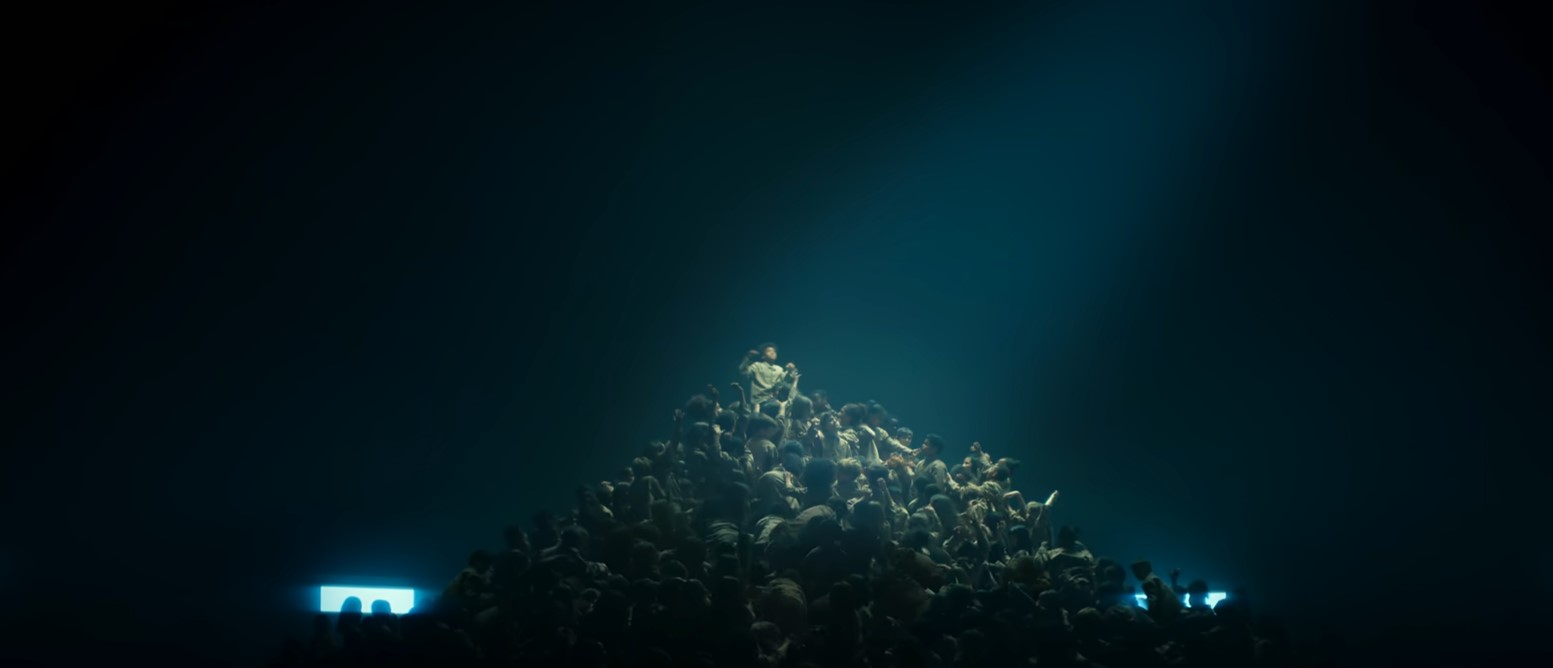
There are subtle hints in the film that clarify that sexual relationships do exist in the establishment. When Perempuán and Zamiatin lay on the same bed, their neighbor laughs at them peculiarly, possibly because the latter misunderstands that they are sleeping together. Thus, the children can be the kids of the residents. These boys and girls are seemingly transported to the levels in the Pit whenever someone dies within the same, indicating that they are replacing the dead adult residents. The boy Miharu, who is seemingly part of the Administration, chooses can be one of the replacements. There are no factors suggesting that there is anything unique about him.
Since a girl among the children ends up in one of the lower levels in ‘The Platform,’ the boy is not unique or the only one to be transported to the same. But why exactly the lower levels? Obviously, children cannot starve as much as the adult residents of the Pit, which makes them deserve the higher levels where they can easily lay their hands on food. Instead, they end up in the lower levels where dishes do not reach at all. The obvious reason is that the predicament exposes the children to prolonged periods of starvation that can prepare them for life in the Pit.
However, because of the religious connections the narrative subtly has, there can be a more significant reason. If the Pit is considered a representation of Hell, the children can be seen as the “products” or offsprings of the “sinners.” The Administration must be under the impression that these children carry the sin of their parents, which explains why they are banished to the lower levels. This banishment can be seen as a punishment forced on the kids. “Exodus 34:7” in the ‘Bible’ states that “he punishes the children and their children for the sin of the parents to the third and fourth generation,” which can be paralleled with the suffering forced upon these little boys and girls.
Read More: Where Was Netflix’s The Platform 2 Filmed?

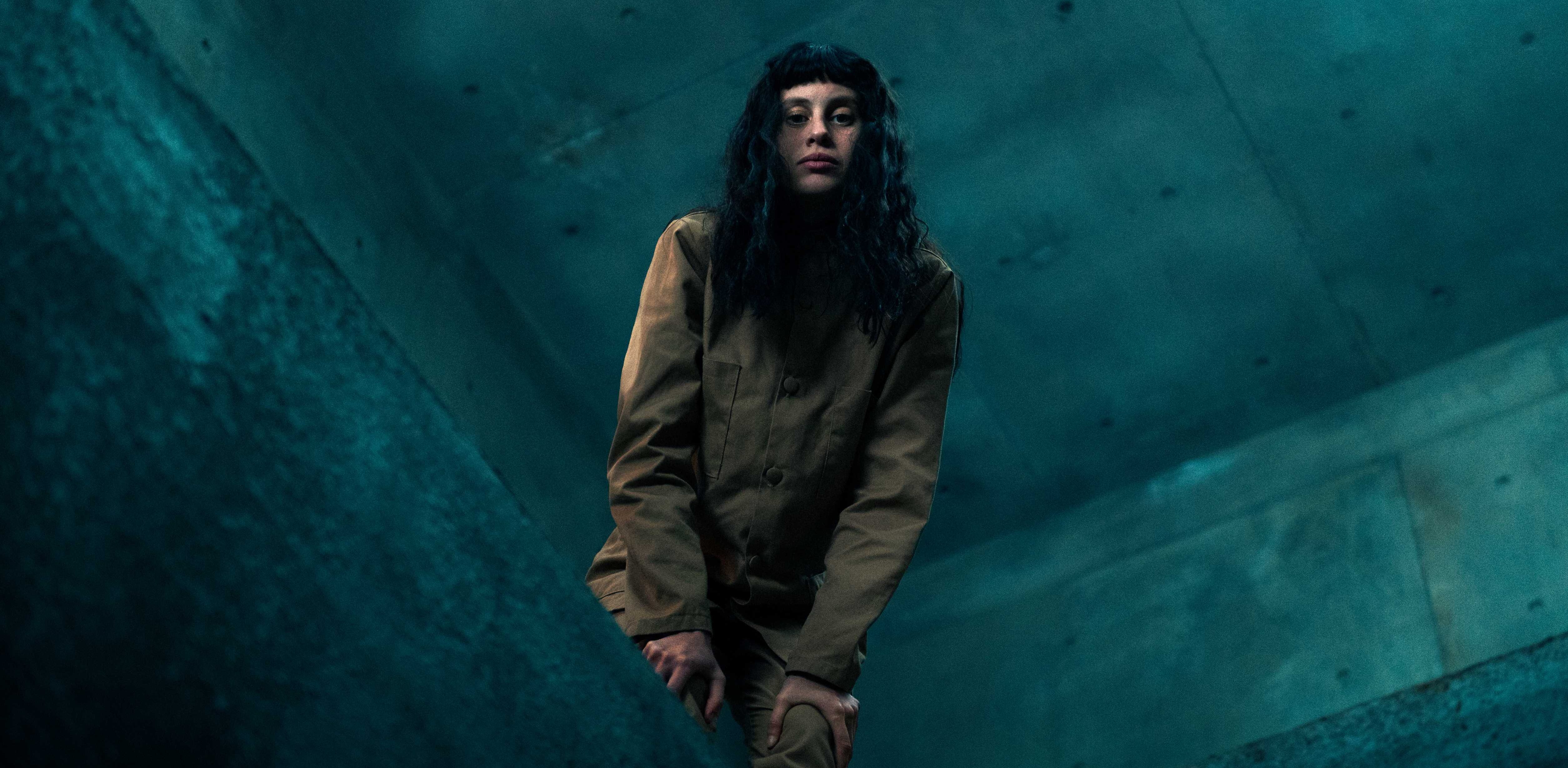
You must be logged in to post a comment.